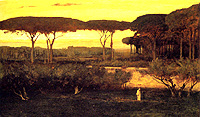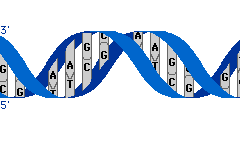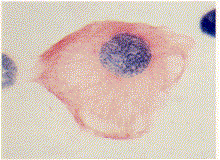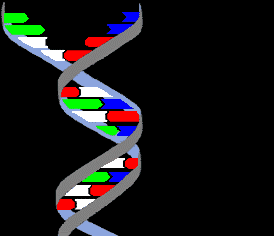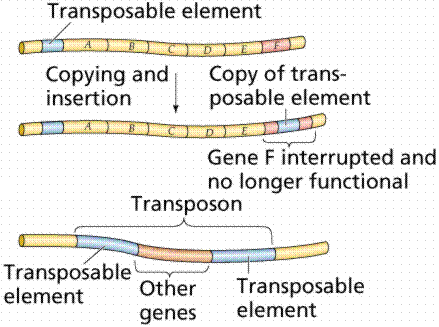 The
story of genes
The
story of genesNavigating the site:
A Story

Would a gene by any other name be as complex ?
The intricate, contingent, and unbelievable functions of chromosomes.
A sublime, frightening yet simultaneously uplifting discovery lies right inside our own bodies.I first realized this when David Brower, at a talk I had heard in graduate school, argued that the condor was the product of an ever adaptive response to the vast deserts and scarce prey of Southern California, the remote mountain peaks the unpredictable patterns of rain and drought. He implied these conditions were all stored in the condor’s vast variety of wild genes and their expression, especially in the shape of their wings, was fashioned by the high flight and instincts of this immense predatory bird. Brower suggested that the wild conditions shaping the form of this rare bird could not be duplicated by human genetic manipulation.
In our cells exists the incredible history of our species, of our genus, of our phylum and indeed of all life on Earth. If only we could read the 800 to 1000 cook books packed into our genomes. Collectively genes are referred to as a genome. Every creature has thousands of genes each telling a different tale and providing specific recipes for how to build proteins.
Fortunately a very ancient machine, maybe the oldest machine on earth, is called RNA.
Ribonucleic Acid, or RNA, is a structurally composite assembly of alpha and double helices arranged in a staggeringly complicated pattern that allows this molecule to interpret, translate, move, construct and assemble amino acids in a sequence that dictates a specific protein. These proteins build the fabric of life that we call cell walls, organelles, or a neurotransmitter, or enzymes and hormones in more sophisticated organisms like plants and animals.
Genes, as the name implies, possess a kind of unexamined, yet exalted place in our story of life. They seem to be far more tangible than they really are. The name derives form the Greek and Latin word for generative, the natural conception of anything out of which all life emerges. It is the name the Greeks gave to the first book of the Hebrew Torah: Genesis meaning the beginning. The origin of things is their genesis. Genetics and genesis have a common root word, "gen," meaning to become. So the word implies how we begin or anything alive comes into being. Genetics is the study of the way all cells come into being, which is through their genes.
But what are genes, besides being an intelligible stretch of a chromosome, called a codon which codes for a sequence of amino acids whose arrangement specify a particular protein? Are they possibly a record of previous responses to changing ecological conditions? This DNA record of the past is stored and archived according to some means decipherable only to RNA. And is RNA the go between, the original interpreter of surrounding conditions, storing away the means to build the proteins necessary to withstand heat, viruses, acidity, alkalinity, highly saline or very cold conditions?
What ever a gene may be, it is certainly a remnant. Genes are surviving sets of recipes for building a far more complicated assortment of interdependent structures that react to circumstances in a way that maintains living things, Genes enable life to continue to diversity, adapt and adjust to ever changing conditions on earth. The storm prone Earth, its drought prone regions, the heat, the floods, the endless volcanism all contribute to the conditions to which life must adjust. And if RNA is as old as we think, it long ago mastered the capability to fashion responses to these life threatening conditions enabling early creatures to not only withstand violent conditions, but to pass along their experience, in a code, to their other organisms.
In the sense that place and location are important, in a whole other sense genes have found a niche on chromosomes and serve as a script for any willing actor to interpret their meaning. The willing actor is the protein that enables the DNA transcription to occur.And from their collective meaning the world around us erupts from the cues of genes. Genes co-construct the massive forests and coral reefs that donate oxygen to us. They collaborate to produce the essential ingredients in the endless variety of creatures we see that all emerge under the direction of RNA. The world that created us under the direction of these antique machines emerges ever more diverse and always more adapted to the unpredictable situations in which life thrives seeking a way through the otherwise often deadly conditions that inevitably envelops all of life. Like seeds on the wind some genes may carry on long after we have departed the scene, but others perish. It is the fortunate genes from which we have descended and are capable of protecting. But will we be agile, adept and enduring enough to protect our wild patrimony, or will we sell it or out of ignorance lose it through inadvertent errors in judgment?
Joseph Siry, Fall 2005, revised on July 2, 2014.
Dawkins | Keller | Lewontin | Margulis | Steingraber | Thomas | Watson | Wilson | X chromosome
Genetics Index | What makes genetics significant? | History of Genetics | DNA discovery | RNA | Resistance| Visual images



